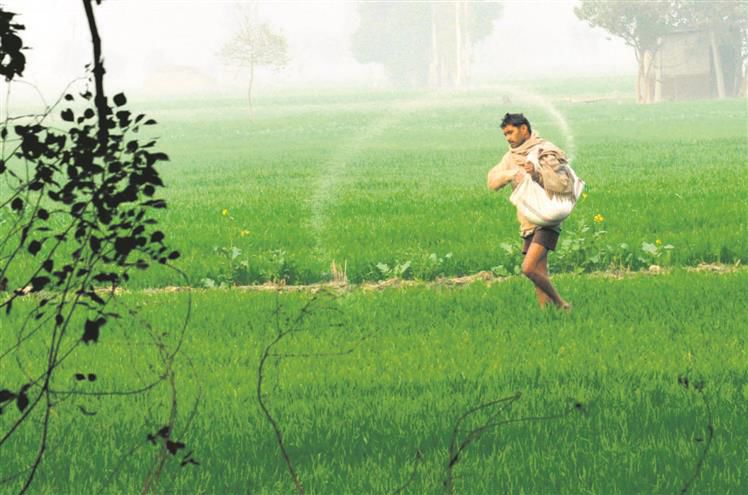Economic Survey calls for urgent reforms in agricultural sector
Neeraj Mohan
New Delhi, July 22
The Economic Survey has called for urgent reforms in the agricultural sector, warning that structural issues could impede the country’s overall economic growth trajectory.
Supporting half of India’s population
- 42.3% of population surviving on agriculture
- 18.2% the sector’s contribution to GDP
- 4.18% average annual growth rate in past 5 years
Strides in rural infra
- 11.57 cr toilets built over
- 10 years under Union Govt’s Swachh Bharat Mission
- 2.39 lakh community toilet complexes constructed
- 11.7 cr households provided tap water connections under Jal Jeevan Mission
- 2.63 cr houses constructed under PM-Awas initiative
- 10.3 cr LPG connections provided under PM Ujjwala Yojana
- 21.4 crore rural households electrified under the Saubhagya scheme
- 15.14 lakh km of roads built under PM Gram Sadak Yojana
“Agriculture is not in a crisis now, but requires a serious structural transformation because climate change and water criticality will loom large in the times to come,” the survey noted. It said the agriculture sector, which supported 42.3 per cent of India’s population and contributed 18.2 per cent to the GDP, had shown resilience with an average annual growth rate of 4.18 per cent over the past five years. However, the growth has moderated to 1.4 per cent for the current year. “Increased investment in agricultural research has been a significant driver, with a return of Rs 13.85 for every rupee invested. In 2022-23, Rs 19,650 crore was allocated for agricultural research,” it said.
The survey revealed that the foodgrain production reached 329.7 million tonnes in 2022-23, with a projected slight decrease to 328.8 million tonnes in 2023-24 due to unfavourable monsoon. The production of oilseeds increased significantly, reducing the share of imported edible oil from 63.2 per cent in 2015-16 to 57.3 per cent in 2022-23. The e-NAM scheme has registered over 1.77 crore farmers and 2.56 lakh traders, streamlining agricultural marketing. Additionally, the government has initiated the formation of 10,000 farmer producer organisations (FPOs), with 8,195 already established.
The MGNREGA has evolved into an asset creation programme, with the share of individual beneficiary works rising from 9.6 per cent in FY14 to 73.3 per cent in FY24.
It stated small landholder farmers were unlikely to boost their income by continuing to produce rice, wheat, millets, pulses or oilseeds. Instead they should shift to high-value agriculture such as fruits and vegetables, fisheries, poultry and dairy farming. The PM Fasal Bima Yojana continued to provide comprehensive crop insurance, with an insured area of 610 lakh hectares in 2023-24.
The survey stressed the need for increased private sector investment in agriculture to drive advancements. Investments in technology, modern production methods and marketing infrastructure were crucial for enhancing post-harvest management and reducing losses, it said. The allied sectors such as livestock and fisheries have been highlighted as robust growth centres, with the livestock sector growing at a compound annual growth rate (CAGR) of 7.38 per cent from 2014-15 to 2022-23 and the fisheries sector at 8.9 per cent CAGR over the same period.









